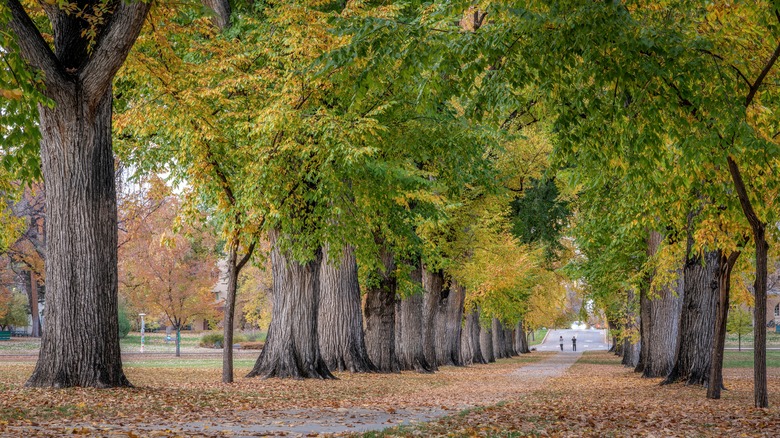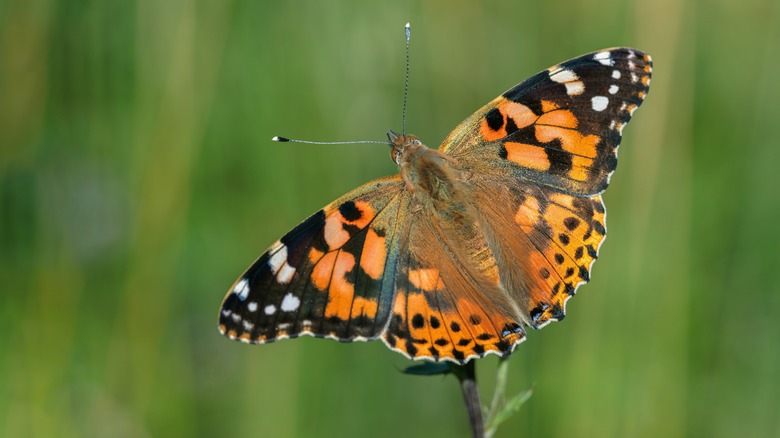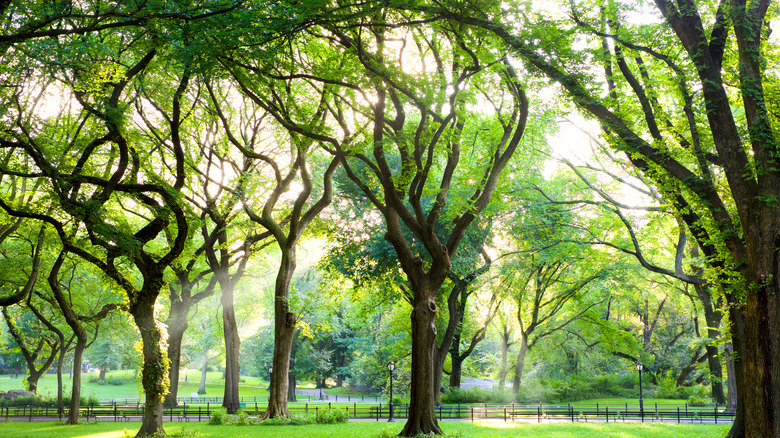Plant Elm Trees To Attract Butterflies And Honor American History
American elms are elegant and beautiful native North American trees. Sadly, their numbers have been decimated by Dutch elm disease, which is caused by a pathogenic fungus called Ophiostoma novo-ulmi. Luckily, new, more disease-resistant cultivars are now available, and you can once again help your native pollinators and grow a piece of U.S. history by planting a beautiful American elm (Ulmus americana) tree. This beloved species, sometimes called white elm, is a massive and statuesque tree that can easily reach 90 feet tall. Hardy in zones 3 through 9, the American elm's native range stretches across the eastern and central parts of the United States and Canada.
While American elms tend to naturally grow near rivers or streams, they are relatively drought-tolerant once established. Elms need well-draining soil with a neutral pH to grow their best and thrive in full sun or part shade. Because of the risk of Dutch elm disease, choosing a disease-resistant cultivar like Princeton or Valley Forge is important when buying an American elm. You can also use these tips to identify Dutch elm disease on your trees.
American elms and wildlife
Butterfly lovers will definitely want to find a space for an American elm. Elms, much like oaks, attract all kinds of beautiful butterflies to your yard. The American elm tree is a popular host to multiple butterfly species, including the painted lady, eastern comma, mourning cloak, and question mark butterfly. These butterflies lay their eggs on the underside of elm leaves, and the tree acts as a host to the larvae. Once they are adults, the butterflies feed on nearby rotting fruits and tree sap and then lay the eggs of the next generation on the leaves of the elm trees.
Butterflies and caterpillars aren't the only wildlife that loves American elms. Songbirds also love the distinctive helicopter seeds the trees carry. Additionally, a variety of birds, including orioles and cardinals, use the strong branches of elms for nesting. Birds like chickadees and woodpeckers also appreciate elm trees and often live in holes or cavities in the trees, just as mammals like raccoons do.
Elm trees and American history
Americans have long seen and appreciated the beauty and utility of American elms. Native Americans have historically used them as council trees, which helped to mark important gathering locations for the tribe. Early European settlers also admired the trees, and elms quickly became popular trees for lining streets and college campuses. This admiration for the trees did not diminish, and in 1856, famed naturalist and writer Henry David Thoreau even delivered a eulogy for an American elm cut down in his hometown of Concord, Massachusetts.
Americans' love of native elm trees continues today, even as Dutch elm disease has ravaged many of the oldest and most elegant trees. If anything, the loss of so many mature trees may have helped people appreciate American elms even more. While older elm trees are rare these days, especially in the U.S. Northeast, many younger trees (often from disease-resistant cultivars) are beginning to pop up in their place.


